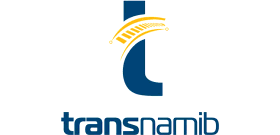 TransNamib To Upgrade Rail, Locomotives
TransNamib To Upgrade Rail, Locomotives
TransNamib of Namibia has embarked on the rehabilitation and maintenance of the railway line as part of plans to improve the company’s ability to operate and move freight safely.
Abigail Raubenheimer, Corporate Communications Manager at TransNamib says the Namibian government as the owner of the railway infrastructure has reaffirmed its commitment to rail, through the recent investments in the railway line.
She says the funding from the government amounting to N$175 million will be spent on increasing the company’s capacity in terms of rolling stock.
“Within the next six months, we need to fix 12 locomotives so our procurement requirements now are for locomotive spares. After that, we have plans to refurbish an additional four to six locomotives and will put out procurement for spares by April. Our strategic procurement direction for the next year will focus on the critical maintenance of rail in terms of the railway, equipment and parts as well as training, development and safety.”
Raubenheimer states that work on the Walvis Bay - Kranzberg route of about 200 kilometres will be completed by mid-2023. “With the improved railway line, especially on this crucial section, which is an interconnector from the port to the rest of Namibia, TransNamib's capacity will increase.”
She says while challenged in various areas of its operations, TransNamib has continued to fulfil its mandate and its role in Namibia's transport and logistics sector.
“Our operations have continued and labour relations have settled, and we have remained focused on the future and transforming TransNamib into a sustainable company.”
Raubenheimer adds that rail remains a critical enabler of the Namibian economy.
“Our capacity to move bulk freight in terms of economies of scale is unmatched. While the government is investing in rail, TransNamib is preparing itself to move more freight by increasing its capacity of rolling stock. It is no secret that the company is operating with outdated rolling stock which not only limits us in terms of the volumes we are able to move, but also the safety aspect is affected.”
TransNamib is focused on the continued implementation of its Road-to-Rail strategy, to grow and increase its volume base, with an emphasis on strategic partnership with key and major logistics service providers, freight forwarders, clearing agents and dry port developers, reveals Raubenheimer. TransNamib has developed facilities at both Grootfontein and Gobabis; targeting neighbouring countries such as Zambia, DRC, Zimbabwe, Botswana and The Gauteng Region of South Africa.
“The key sectors and commodities targeted are: coal, bulk fuel, copper concentrate, copper cathodes & blisters, Sulphur, containers, sugar and manganese. From a sales drive point of view; the aim is to increase our bulk fuel sector.”
TransNamib is currently in the process of upgrading the 42 kilometres of railway between Sandverhaar and Buchholzbrunn in southern Namibia to fully harness the potential of the Lüderitz port and the railway line between Aus and Lüderitz.
“There is huge potential for increasing the exporting of manganese from South Africa through the port,” says Raubenheimer. The railway line was decommissioned in 1997 due to poor track standards caused by a lack of maintenance. The line was re-opened in 2018. The Aus-Luderitz harbour railway line (140km) was upgraded to 18.5. ton/axle load.
Raubenheimer adds that a pilot project in Namibia to develop a hydrogen-diesel locomotive was selected to receive funding from the German Federal Ministry of Education and Research. A consortium of Hyphen Technical, CMB.TECH, Namibian National Railways TransNamib, the University of Namibia and Traxtion will develop Africa’s first dual-fuel hydrogen-diesel locomotive, with a unique hydrogen storage method.
The project, which is named HyRail Namibia, is expected to be completed in 18 months. The consortium will be led by Hyphen Technical, which aims to develop the technology for implementing hydrogen as a fuel on rolling stock and other freight vehicles.
“Two traditional diesel-electric locomotives will be converted to be able to use hydrogen in the internal combustion engines, using hydrogen technology,” reveals Raubenheimer.
Other projects include Commuter Train Services in the capital city, Windhoek. The growing population in Windhoek and surrounding areas have resulted in a greater demand for public transport capacity to and from the central business areas. The Ministry of Works and Transport has conducted studies to determine the viability of providing commuter train services to the outer suburbs of Windhoek.
Raubenheimer mentions that TransNamib has received confirmation of funding from the Development Bank of Southern Africa (DBSA) and the Development Bank of Namibia (DBN) and is in the process of finalizing and fulfilling the conditions of the loan to access the funding. The funding worth N$2.5 billion will be solely used to build TransNamib’s capacity in terms of rolling stock.
